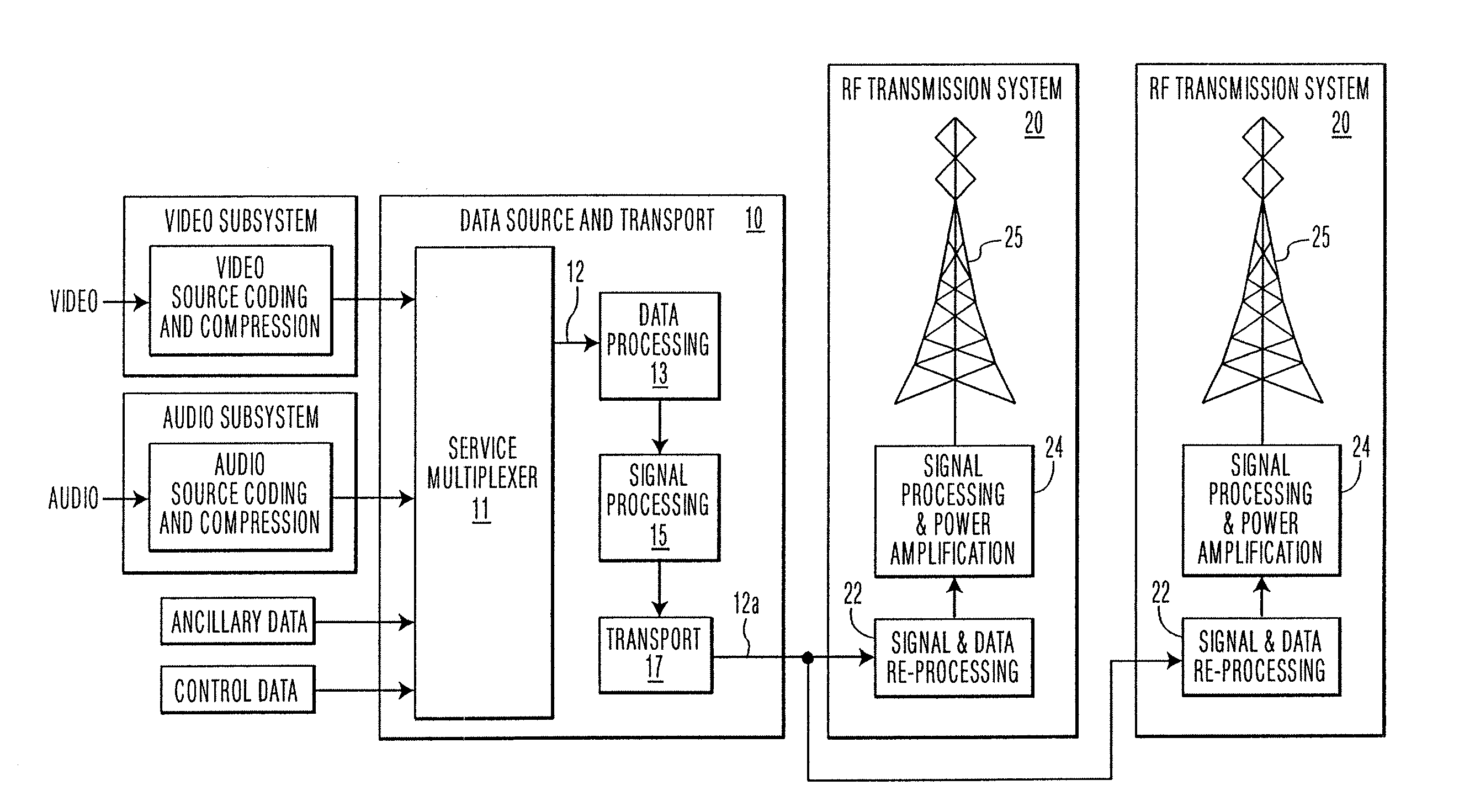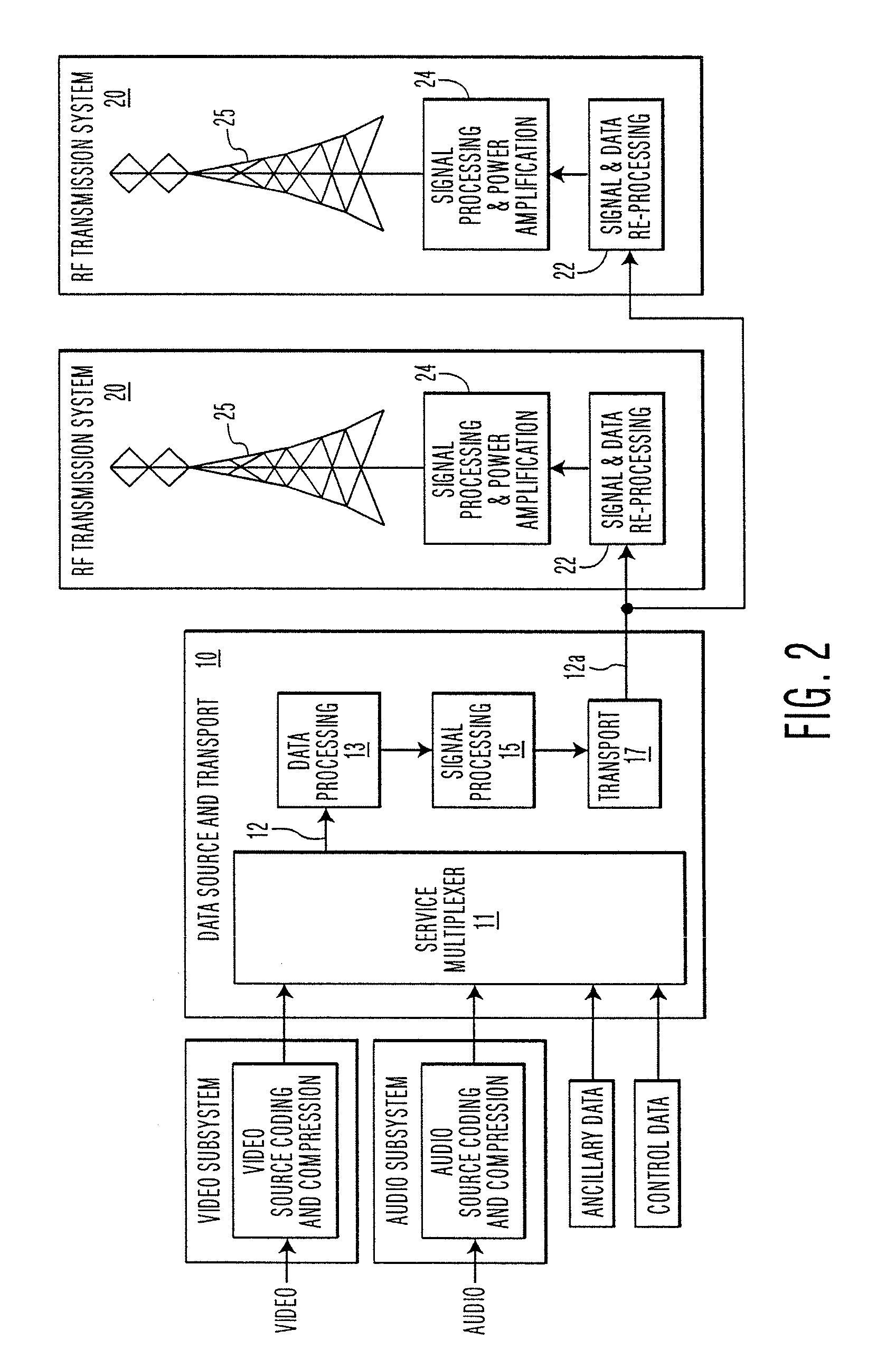Digital signal transmitter synchronization system
a digital signal and transmitter technology, applied in the field of digital signal transmitter synchronization systems, can solve the problems of insufficient measures, near completeness, internal interference in the system, etc., and achieve the effect of reducing the burden on adaptive equalizers
- Summary
- Abstract
- Description
- Claims
- Application Information
AI Technical Summary
Benefits of technology
Problems solved by technology
Method used
Image
Examples
Embodiment Construction
[0074]The preferred embodiments of the present invention will now be described with reference to FIGS. 1-21 of the drawings. Identical functional elements in the various figures are designated with the same reference numerals even though their precise operation may be different. The discussion to follow uses 8-VSB modulation of a digital television signal strictly for the sake of example. As will be recognized by those of ordinary skill in the art, the techniques described may be applied to a wide range of applications and types of modulation.
Overview of Synchronization Methods
[0075]The methods, systems and apparatus according to the present invention for synchronizing transmitters operate, in several embodiments, to insert reference signals into the data sent to the transmitters in order to place them into known states at specific times relative to the signals sent to them for transmission. In one embodiment, the methods, systems and apparatus according to the present invention ope...
PUM
 Login to View More
Login to View More Abstract
Description
Claims
Application Information
 Login to View More
Login to View More - R&D
- Intellectual Property
- Life Sciences
- Materials
- Tech Scout
- Unparalleled Data Quality
- Higher Quality Content
- 60% Fewer Hallucinations
Browse by: Latest US Patents, China's latest patents, Technical Efficacy Thesaurus, Application Domain, Technology Topic, Popular Technical Reports.
© 2025 PatSnap. All rights reserved.Legal|Privacy policy|Modern Slavery Act Transparency Statement|Sitemap|About US| Contact US: help@patsnap.com



